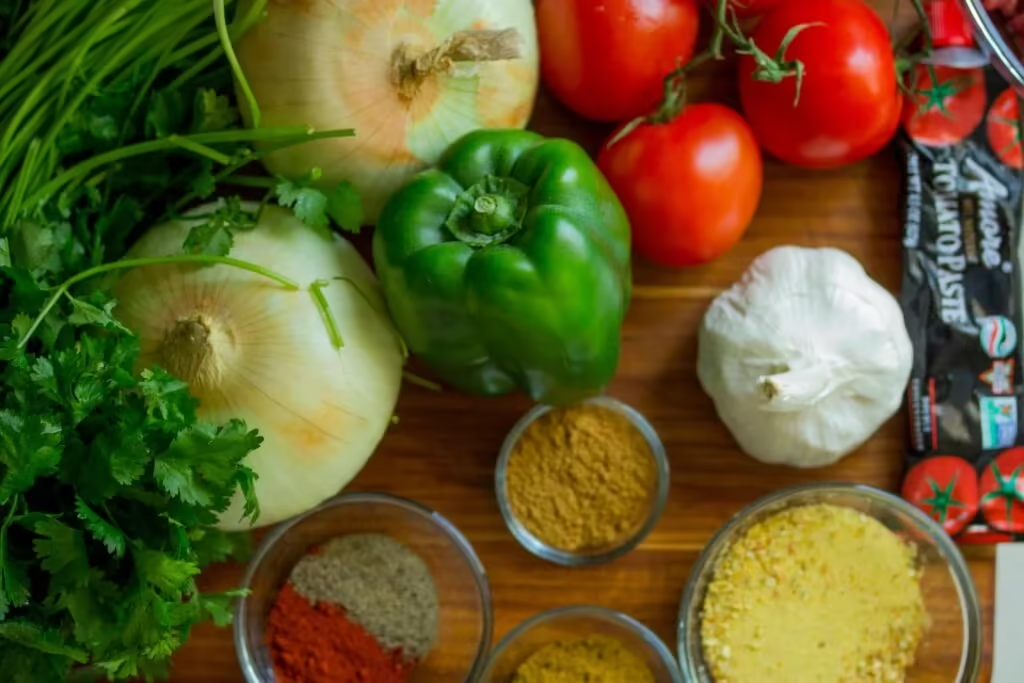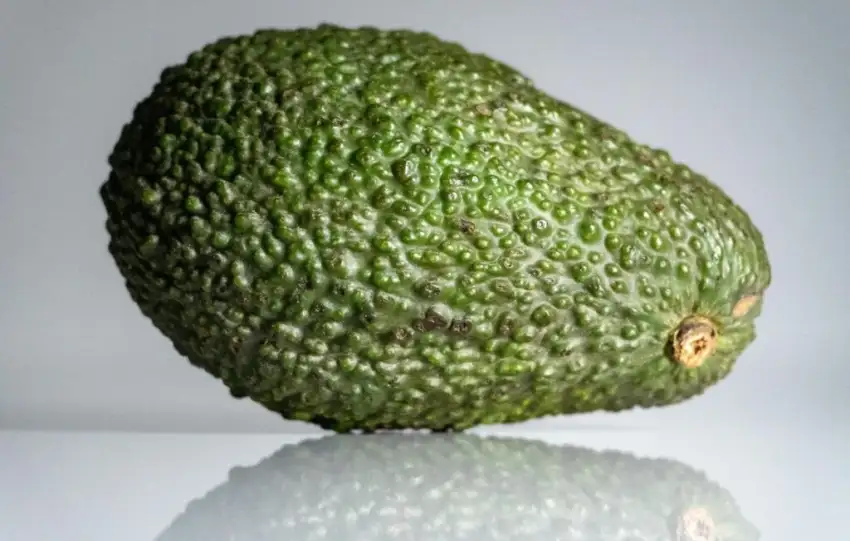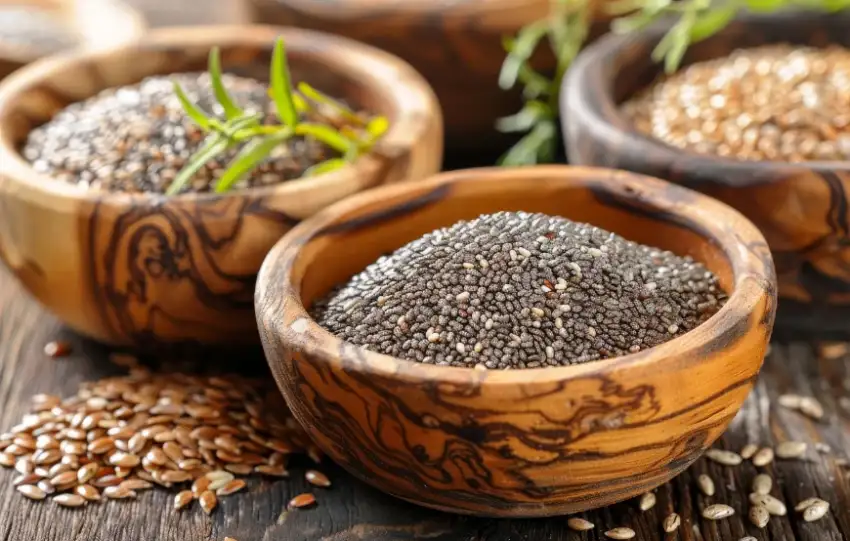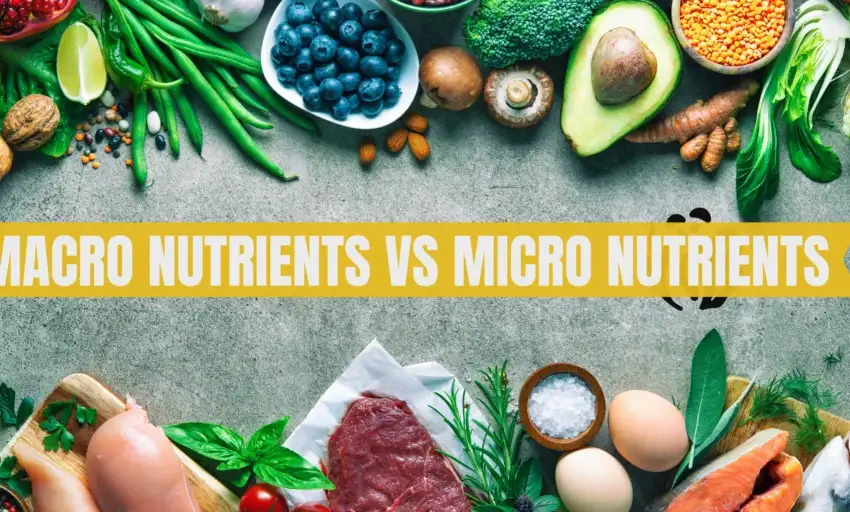Plant-Based Nutrition: A Beginner should know
Introduction
Plant-based nutrition has gained significant traction in recent years, praised for its potential health benefits, ethical considerations, and environmental impact. For those new to this dietary approach, navigating the world of plant-based eating can seem overwhelming. This guide will provide a comprehensive overview of plant-based nutrition, addressing its benefits, debunking common myths, exploring its impact on disease prevention, detailing the foods included in a plant-based diet, and offering practical advice on quantities and recipes.
1. Understanding Plant-Based Nutrition
Plant-based nutrition focuses on consuming foods primarily derived from plants. This includes vegetables, fruits, grains, legumes, nuts, and seeds. Unlike vegetarian diets, which may include dairy and eggs, a plant-based diet typically excludes all animal products.
Key Components:
- Fruits and Vegetables: Rich in vitamins, minerals, antioxidants, and fiber.
- Legumes: Beans, lentils, and peas are excellent sources of protein and fiber.
- Whole Grains: Brown rice, quinoa, and oats provide complex carbohydrates and essential nutrients.
- Nuts and Seeds: High in healthy fats, protein, and minerals like magnesium and zinc.
2. Benefits of a Plant-Based Diet
2.1. Health Benefits
- Improved Heart Health: Studies suggest that plant-based diets can lower blood pressure, cholesterol levels, and reduce the risk of heart disease.
- Better Weight Management: Plant-based diets are often lower in calories and higher in fiber, which can help with weight loss and management.
- Enhanced Digestive Health: High fiber content promotes healthy digestion and can prevent constipation.
- Reduced Risk of Chronic Diseases: Evidence indicates a lower risk of developing type 2 diabetes, certain cancers, and other chronic conditions.
2.2. Ethical and Environmental Benefits
- Animal Welfare: A plant-based diet reduces reliance on animal agriculture, which can lead to better treatment of animals.
- Environmental Impact: Plant-based diets have a lower carbon footprint compared to meat-based diets, helping to reduce greenhouse gas emissions and conserve water.
3. Common Myths About Plant-Based Diets
3.1. Myth: Plant-Based Diets Lack Protein
- Fact: Many plant-based foods, such as lentils, chickpeas, quinoa, and tofu, are rich in protein. Combining different plant proteins can ensure all essential amino acids are consumed.
3.2. Myth: Plant-Based Diets Are Low in Iron
- Fact: While plant-based sources of iron are non-heme (less easily absorbed), consuming vitamin C-rich foods alongside can enhance iron absorption.
3.3. Myth: Plant-Based Diets Lead to Nutrient Deficiencies
- Fact: With careful planning, a plant-based diet can provide all essential nutrients. Key nutrients to focus on include vitamin B12, vitamin D, omega-3 fatty acids, iron, and calcium.
3.4. Myth: Plant-Based Diets Are Expensive
- Fact: Many plant-based staples like beans, lentils, rice, and seasonal vegetables are cost-effective and can fit various budgets.
4. Disease Prevention Through Plant-Based Nutrition
4.1. Cardiovascular Disease
- Plant-based diets are associated with lower cholesterol levels, reduced blood pressure, and decreased risk of heart disease.
4.2. Type 2 Diabetes
- High fiber intake from plant foods can improve insulin sensitivity and help manage blood sugar levels.
4.3. Cancer
- Increased consumption of fruits and vegetables can provide antioxidants and phytochemicals that may help reduce the risk of certain cancers.
4.4. Obesity
- The high fiber and low-calorie content of plant-based foods can contribute to weight management and reduce the risk of obesity.
5. Foods Included in a Plant-Based Diet
5.1. Fruits and Vegetables
- Leafy Greens: Spinach, kale, and Swiss chard.
- Colorful Vegetables: Bell peppers, carrots, and sweet potatoes.
- Fruits: Berries, oranges, apples, and bananas.
5.2. Whole Grains
- Examples: Brown rice, quinoa, barley, and whole wheat.
5.3. Legumes
- Examples: Lentils, black beans, chickpeas, and peas.
5.4. Nuts and Seeds
- Examples: Almonds, chia seeds, flaxseeds, and walnuts.
5.5. Plant-Based Proteins
- Examples: Tofu, tempeh, edamame, and seitan.
6. Affecting Quality of Life
6.1. Energy Levels
- Plant-based diets can improve overall energy levels due to increased consumption of nutrient-dense foods and reduced intake of processed foods.
6.2. Mental Clarity
- Nutrient-rich plant foods can enhance cognitive function and mental clarity.
6.3. Longevity
- Evidence suggests that plant-based diets are associated with a lower risk of premature death and a longer, healthier life.
7. Recommended Quantities Based on Demographics
7.1. Children and Adolescents
- Focus on nutrient-dense foods like fortified cereals, legumes, and dairy alternatives to support growth and development.
7.2. Adults
- Aim for a balanced intake of fruits, vegetables, whole grains, and legumes. The USDA recommends at least 5 servings of fruits and vegetables daily.
7.3. Seniors
- Emphasize foods rich in calcium and vitamin D, such as fortified plant milks and leafy greens, to support bone health.
7.4. Athletes and Sports Enthusiasts
- Increase protein intake with legumes, tofu, and protein-rich grains. Ensure adequate energy intake to match activity levels.
8. Popular Plant-Based Recipes
8.1. Breakfast: Smoothie Bowl
- Ingredients: 1 banana, 1 cup spinach, 1 cup almond milk, 1 tablespoon chia seeds, 1/2 cup berries.
- Instructions: Blend all ingredients until smooth, pour into a bowl, and top with additional berries, nuts, and seeds.
8.2. Lunch: Chickpea Salad
- Ingredients: 1 can chickpeas, 1 cucumber, 1 bell pepper, 1/4 cup red onion, 2 tablespoons olive oil, lemon juice, salt, and pepper.
- Instructions: Mix all chopped vegetables with chickpeas. Dress with olive oil, lemon juice, salt, and pepper.
8.3. Dinner: Lentil Stew
- Ingredients: 1 cup lentils, 1 onion, 2 carrots, 2 celery stalks, 1 can diced tomatoes, 1 tablespoon cumin, 4 cups vegetable broth.
- Instructions: Sauté onions, carrots, and celery. Add lentils, tomatoes, and broth. Simmer until lentils are tender. Season with cumin, salt, and pepper.
8.4. Snack: Roasted Chickpeas
- Ingredients: 1 can chickpeas, 1 tablespoon olive oil, 1 teaspoon paprika, 1/2 teaspoon garlic powder.
- Instructions: Toss chickpeas with oil and spices. Roast at 400°F (200°C) for 20-30 minutes until crispy.
9. Important Nutrients in a Plant-Based Diet
9.1. Vitamin B12
- Sources: Fortified cereals, nutritional yeast, and plant-based milk alternatives.
9.2. Vitamin D
- Sources: Fortified plant milks and cereals, sunlight exposure.
9.3. Omega-3 Fatty Acids
- Sources: Flaxseeds, chia seeds, walnuts, and algae-based supplements.
9.4. Iron
- Sources: Lentils, chickpeas, quinoa, fortified cereals. Pair with vitamin C-rich foods to enhance absorption.
9.5. Calcium
- Sources: Fortified plant milks, tofu, almonds, and leafy greens.
9.6. Zinc
- Sources: Nuts, seeds, whole grains, and legumes.
Conclusion
Transitioning to a plant-based diet can be a rewarding choice for your health, the environment, and animal welfare. By understanding the benefits, addressing common myths, and incorporating a variety of nutrient-dense foods, you can enjoy a balanced and fulfilling plant-based lifestyle. With proper planning and mindful eating, a plant-based diet can meet your nutritional needs and enhance your overall quality of life.
Frequently Asked Questions (FAQs) About Plant-Based Nutrition
1. What exactly is a plant-based diet, and how does it differ from a vegetarian or vegan diet?
A plant-based diet primarily focuses on consuming foods derived from plants. This includes vegetables, fruits, whole grains, legumes, nuts, and seeds. It typically excludes all animal products, including meat, dairy, and eggs.
Key Differences:
- Vegetarian Diet: Includes plant foods plus dairy and eggs.
- Vegan Diet: Excludes all animal products, including dairy, eggs, and often honey.
- Plant-Based Diet: Emphasizes plant foods but might not strictly exclude all animal products. It’s more about the emphasis on plant consumption rather than a strict exclusion.
2. How can I ensure I’m getting enough protein on a plant-based diet?
Getting adequate protein on a plant-based diet is entirely feasible with proper planning. Key sources of plant-based protein include:
- Legumes: Beans, lentils, and peas.
- Whole Grains: Quinoa, brown rice, and barley.
- Nuts and Seeds: Almonds, chia seeds, and hemp seeds.
- Soy Products: Tofu, tempeh, and edamame.
- Seitan: A wheat-based protein.
Combining these foods throughout the day ensures you get all essential amino acids needed for protein synthesis.
3. What are the best sources of vitamin B12 in a plant-based diet?
Vitamin B12 is not naturally found in plant foods, so those on a plant-based diet need to consume fortified foods or supplements.
Sources:
- Fortified Foods: Plant-based milks, cereals, and nutritional yeast.
- Supplements: Vitamin B12 supplements are an effective way to ensure adequate intake.
It’s crucial to regularly monitor B12 levels through blood tests and adjust intake as necessary.
4. Can a plant-based diet provide enough iron, and how can I improve its absorption?
Plant-based diets include non-heme iron, which is less easily absorbed than heme iron from animal sources. However, you can still meet your iron needs with careful planning.
Plant-Based Iron Sources:
- Legumes: Lentils, chickpeas, and beans.
- Seeds: Pumpkin seeds and hemp seeds.
- Leafy Greens: Spinach and kale.
- Whole Grains: Quinoa and fortified cereals.
To Improve Absorption:
- Pair with Vitamin C: Consuming vitamin C-rich foods (like oranges, strawberries, or bell peppers) with iron-rich meals enhances absorption.
5. Are there any specific nutrients that I need to pay extra attention to on a plant-based diet?
Yes, several nutrients require special attention on a plant-based diet:
- Vitamin B12: Essential for nerve function and red blood cell production.
- Vitamin D: Important for bone health. Look for fortified plant milks or consider supplements, especially in low sunlight regions.
- Omega-3 Fatty Acids: Found in flaxseeds, chia seeds, and walnuts. Consider algae-based supplements for EPA and DHA.
- Iron: As mentioned, focus on plant sources and improve absorption with vitamin C.
- Calcium: Found in fortified plant milks and leafy greens.
- Zinc: Present in nuts, seeds, and whole grains.
Regularly checking levels through blood tests and adjusting your diet or supplements accordingly is advised.
6. How can I transition to a plant-based diet without feeling deprived or overwhelmed?
Transitioning to a plant-based diet can be smooth with a few strategies:
- Start Slowly: Gradually replace animal products with plant-based options. Begin with meatless days or meals.
- Explore Recipes: Find delicious plant-based recipes that you enjoy. Experiment with new ingredients and cooking techniques.
- Educate Yourself: Learn about plant-based nutrition to ensure you’re meeting all your nutrient needs.
- Seek Support: Join online communities or local groups for support and inspiration.
- Plan Your Meals: Planning and preparing meals ahead of time can help you stay on track and avoid the temptation of convenience foods.
7. How can a plant-based diet affect athletic performance and recovery?
A well-planned plant-based diet can support athletic performance and recovery effectively.
Considerations for Athletes:
- Protein: Include a variety of protein sources such as legumes, tofu, and seitan to support muscle repair and growth.
- Carbohydrates: Ensure adequate intake of complex carbohydrates like whole grains and fruits to fuel your workouts and aid recovery.
- Hydration: Stay hydrated with water and electrolyte-rich plant-based beverages.
- Recovery Foods: Post-workout meals should include a mix of protein and carbohydrates, such as a smoothie with protein powder, fruit, and spinach or a quinoa salad with beans and vegetables.
Athletes on a plant-based diet often find they can perform at high levels and recover well, provided they are mindful of their nutritional intake and energy needs.












